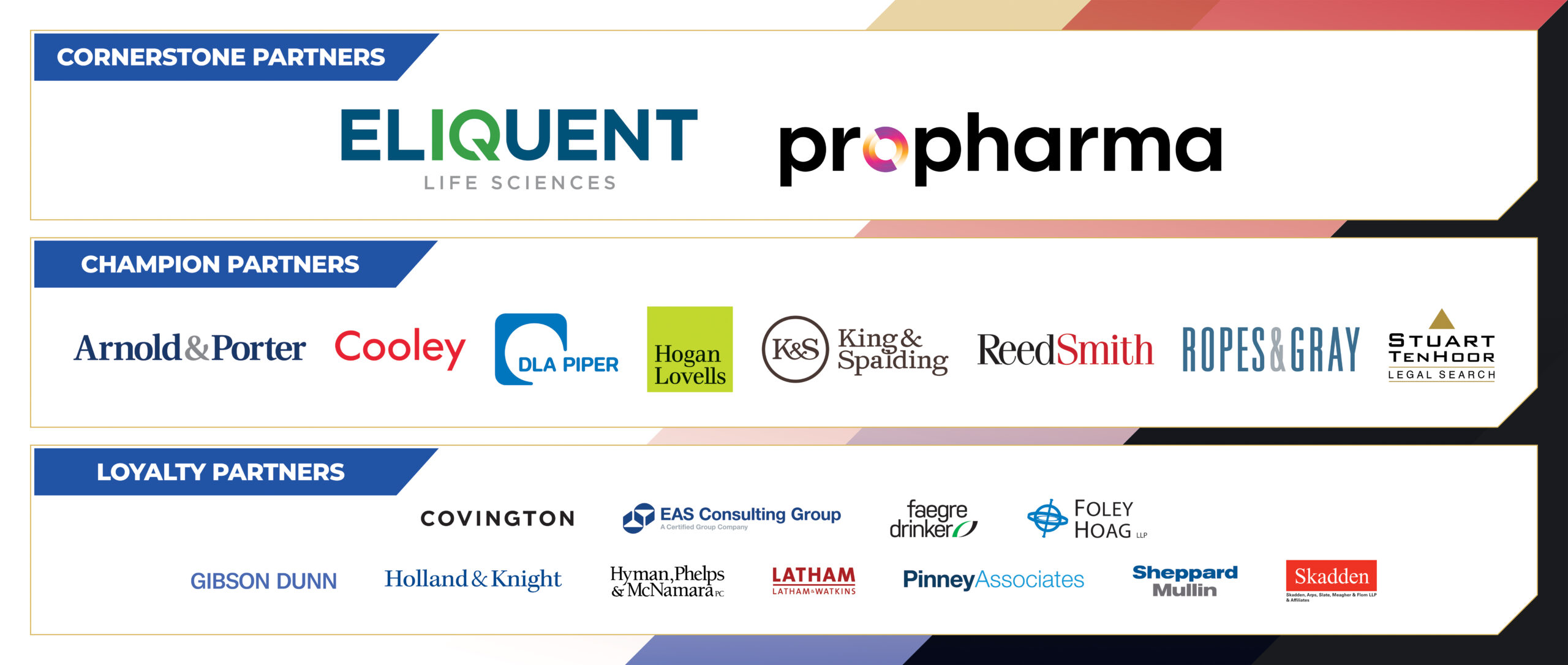
Inside Warning Letters: A Statistical Update
By Véronique Li, Jeffrey Gibbs
Warning letters (WLs) are issued when FDA identifies what it believes to be significant violations of federal requirements. WLs typically follow a similar format in that they identify FDA’s concerns and provide an opportunity for the recipient to address those concerns within a certain time, usually within 15 working days. A response could include a recipient’s plans to conduct a root cause analysis, identify corrective actions, and verify their effectiveness. According to FDA’s processes, either at a subsequent inspection or through a review of written responses, FDA determines whether the corrections are adequate and notifies the company of its conclusions. WLs also threaten recipients with sanctions if they fail to comply with the law.
To provide a better understanding of how the WL process functions, we reviewed WLs issued since January 9, 2020 for trends on when WLs were posted and issued. We also calculated the length of time between milestone activities such as the conclusion of some FDA activity (e.g., inspection or promotional review) and issuance of a WL. While the circumstances will vary for individual companies, knowing these patterns can help companies understand the probabilities of different outcomes.
Posting and Issuance Patterns
The most common day for a WL to post on FDA’s website is Tuesday, accounting for over 71% of the WLs we reviewed (2631 of 3678). The next most common day was Thursday, with nearly 12% (474 of 3678).
|
Day |
Posted |
Issued |
||
|
Count |
Percent of Total |
Count |
Percent of Total |
|
|
Sunday |
0 |
0.00% |
2[1] |
0.05% |
|
Monday |
101 |
2.75% |
530 |
14.41% |
|
Tuesday |
2631 |
71.53% |
676 |
18.38% |
|
Wednesday |
235 |
6.39% |
710 |
19.30% |
|
Thursday |
474 |
12.89% |
989 |
26.89% |
|
Friday |
237 |
6.44% |
771 |
20.96% |
While we haven’t discovered any rationale behind this timing, Tuesday has long been the favored day for posting WLs.
FDA generally posts WLs promptly after they have been issued. On average, it takes 19 days from the date of issuance of a WL to being posted online. One very recent exception occurred in July when FDA issued Whoop, Inc. a WL, which was posted within one day. The WL makes clear that its issuance followed two meetings between Whoop and FDA in May 2025, an FDA review of promotional materials in May 2025, and a response letter sent to FDA in June 2025. There are also outliers at the other end. The WL issued to Future Diagnostics Solutions B.V., for example, was posted a whopping 355 days after it was issued.
The Center for Devices and Radiological Health (CDRH) accounted for four of these top ten instances. Besides the letter to Future Diagnostics Solutions B.V., letters to Marci Beauty, P.T. Sankei Medical Industries, and Spectrum Medical Ltd. were posted 245, 224, and 214 days, respectively, after they were issued. The Center for Drug Evaluation and Research (CDER) was responsible for the second longest gap between issuance of a WL and posting: CDER’s letter to Vegewax Candleworx Ltd. was posted 277 days after it was issued. FDA offers no explanation for the delays, nor did we see any similarities among the letters for which there were significant delays. It would seem important for the public (e.g., customers, potential customers, consumers, physicians, etc.) to know about these allegedly serious issues relating to the company in a timely manner.
In terms of WLs being issued, there was a more even distribution in days of issuance, with Thursday (989 of 3678, 26.89%) being the most common, followed by Friday (771 of 3687, 20.96%).
Issuance and Posting Processes vs. Practice
The Regulatory Procedures Manual serves as a reference manual and provides FDA staff with information on internal procedures to be used during regulatory and enforcement matters, including language on timeframes for WLs. Chapter 4 of the Regulatory Procedures Manual which was last updated in July 2024, states that a WL recommendation should be submitted to the appropriate reviewing office within 15 working days following the end of an inspection. The Center then has an additional 15 working days to approve or disapprove the recommendation. This means that a company should be able to expect a WL within 30 working days after the close of an inspection. The Regulatory Procedures Manual does not describe the process for posting WLs, but as noted above, we calculated that it takes an average of 19 days for FDA to post a WL.
On the other hand, our analysis showed the length of time between an inspection (or other activity conducted by FDA, such as review of a company’s website) before the issuance of the WL to the company varies significantly, ranging from 0 to 239 days. While the table below lists the top ten WLs in order from longest to shortest time between when a WL was issued and when it was posted, a recent example of where FDA issued a WL relatively quickly is the WL to My Holistic Honey c/o Shenzhen Qanhai Wanb Express Supply Chain Co., LTD. FDA issued the WL on August 25, 2025 after reviewing publicly available information in July 2025.
|
Company |
Inspection End Date |
WL Issued Date |
WL Issued – Inspection End (# Days) |
WL Posted Date |
WL Posted – WL Issued (# Days) |
Issuing Office |
|
Future Diagnostics Solutions B.V. |
January 19, 2023 |
May 11, 2023 |
112 |
April 30, 2024 |
355 |
Center for Devices and Radiological Health (CDRH) |
|
Vegewax Candleworx Ltd. |
October 19, 2023 |
June 14, 2023 |
239 |
March 18, 2025 |
277 |
Center for Drug Evaluation and Research (CDER) |
|
Procesadora Vikino C.A. |
September 15, 2023 |
March 6, 2024 |
173 |
November 26, 2024 |
265 |
Center for Food Safety and Applied Nutrition (CFSAN) |
|
Healthtex Distributors, Inc. |
February 1, 2023 |
June 15, 2023 |
134 |
March 5, 2024 |
264 |
Division of Human and Animal Food Operations East IV |
|
Marci Beauty LLC |
February 2, 2021 |
February 2, 2021 |
0 |
October 5, 2021 |
245 |
Center for Devices and Radiological Health (CDRH) |
|
S&S Quality Wholesale Inc. |
February 16, 2022 |
June 1, 2022 |
105 |
January 31, 2023 |
244 |
Division of Southwest Imports |
|
Dalai Biotech Company Ltd |
May 27, 2024 |
September 30, 2024 |
126 |
May 20, 2025 |
232 |
Human Foods Program
|
|
P.T. Sankei Medical Industries |
May 11, 2023 |
September 19, 2023 |
131 |
April 30, 2024 |
224 |
Center for Devices and Radiological Health |
|
ALI Pharmaceutical Manufacturing, LLC |
October 3, 2022 |
March 30, 2023 |
178 |
October 31, 2023 |
215 |
Division of Pharmaceutical Quality Operations III |
|
Spectrum Medical Ltd |
April 27, 2023 |
September 29, 2023 |
155 |
April 30, 2024 |
214 |
OHT2: Office of Cardiovascular Devices, Office of Product Evaluation and Quality[2] |
Marci Beauty is notable because FDA issued an “It Has Come to Our Attention” letter on June 17, 2020 requesting clearance or approval submission numbers for the devices listed in the WL. A little more than half a year later, on February 2, 2021, FDA conducted a review of their website and concluded that the products remained adulterated and misbranded and issued the WL letter that same day. In this instance, we did not find evidence in the FDA Inspections database that suggests FDA conducted a physical inspection. Instead, FDA relied on publicly available documents and its prior analysis to issue the WL.
Our analysis showed an average of 124 days elapsed between the end of an inspection and WL issuance. Three to four months is consistent with industry experience but inconsistent with the internal procedures outlined for FDA employees. Under FDA’s written procedures, one would expect WLs to be issued roughly 30 working days after completion of the inspection. Given that WLs are issued on average 124 days after an inspection, companies should not interpret the absence of a WL within 30 working days as meaning that no WL is forthcoming. Rather, they should look to observations in the Form FDA 483 and other WLs to aid in predicting whether they are likely to receive one themselves.
Volume Trends Over Time
There was some speculation that there would be fewer WLs issued under the Trump Administration. In fact, however, there was a slight uptick in WLs issued this year compared to more recent years. Looking at the first eight months (because of this article’s publication date) for the last three years, 2025 has yielded an average of 51 WLs per month, compared to an average of 49 for 2024 and 47 for 2023. Notably, however, the total number of WLs for the first eight months of 2023 to 2025 pale in comparison to those issued in the same time frame from 2020 to 2022 (1,172 vs. 1,422). Not surprisingly, COVID-19 contributed to the increase in WLs during this period. COVID-19-related concerns (e.g., adulterated and misbranded; unapproved and misbranded; and unapproved, adulterated, and misbranded) accounted for 238 letters during the first three years of the pandemic. COVID-19 is only referenced three times in 2023 and none in 2024 and 2025 (to date).
|
Year |
January |
February |
March |
April |
May |
June |
July |
August |
Total |
Monthly Average |
|
2020 |
31 |
40 |
61 |
90 |
74 |
58 |
66 |
69 |
489 |
61 |
|
2021 |
44 |
62 |
80 |
60 |
57 |
40 |
49 |
58 |
450 |
56 |
|
2022 |
52 |
69 |
60 |
54 |
64 |
49 |
40 |
95 |
483 |
60 |
|
2023 |
48 |
25 |
36 |
25 |
54 |
71 |
36 |
81 |
376 |
47 |
|
2024 |
42 |
42 |
46 |
60 |
29 |
55 |
61 |
53 |
388 |
49 |
|
2025 |
26 |
36 |
72 |
62 |
61 |
53 |
52 |
46 |
408 |
51 |
On September 9, 2025, President Trump signed a memorandum that addressed misleading direct-to-consumer prescription drug advertisements and ordered the Secretary of Health and Human Services to take action “to ensure transparency and accuracy in direct-to-consumer prescription drug advertising including by increasing the amount of information regarding any risks associated with the use of any such prescription drug . . . .” Wasting no time, CDER issued 66 WLs the same day. The 66 WLs largely targeted online pharmacies and sellers of compounded drugs. The 66 WLs and a WL each from the Center for Biologics Evaluation and Research and the Center for Tobacco Products combined for a total of 68 WLs issued on September 9. This dethroned the previous record of 29 WLs issued on one day, which was set on October 7, 2021. Whether this record will be as unbreakable as Joe DiMaggio’s 56-game hitting streak remains to be seen.
Trends in Citations
References to the Family Smoking Prevention and Tobacco Control Act showed up in 1,235 WLs and topped the list of most-cited subjects in a WL. Current good manufacturing practice (CGMP) was cited in 851 WLs and Quality System Regulation (QSR) was found in 114 WLs. Foreign Supplier Verification Program was cited in 310 WLs.
Organizational changes and inconsistent database naming conventions complicate identification and tabulation of issuing offices. Our analysis identified 146 distinct entities that issue WLs, when considering variations in how different FDA Centers are represented. For example, the Center for Drug Evaluation and Research has been listed as Center for Drug Evaluation and Research, Center for Drug Evaluation and Research (CDER), and Center for Drug Evaluation and Research | CDER. Another complication arises when offices within a Center, rather than the Center itself, are identified.[3]
Our analysis revealed that the Center for Tobacco Products issued the most WLs, accounting for 1,237 letters since January 9, 2020. Boosted by its record-setting September 9, CDER issued 877 letters, followed by CDRH with 245 and the Center for Biologics Evaluation and Research with 45. Offices with “Food” in the name (e.g., Center for Food Safety and Applied Nutrition, Division of Human and Animal Food Operations East I, Office of Human and Animal Food Operations – East Division 1, Human Foods Program, Office of Human and Animal Food Operations East – Division 1, etc.) issued a combined 615 WLs.
Closing Out WLs
The Regulatory Procedures Manual identifies conditions for issuing close-out letters, as well as conditions under which close-out letters may not be issued. According to the Manual, close-out letters may be issued under the following conditions: 1) a response sufficiently demonstrates that identified violations have been adequately corrected; a follow-up inspection shows that implementation of the corrective actions was adequate; or, based on other information, FDA determines that a follow-up inspection is not needed; and 2) a follow-up inspection (or other information) does not reveal other significant violations.
Our analysis revealed that close-out letters are relatively rare and becoming more infrequent. In 2011, more than 18 months after the close-out process was first implemented in 2009, 17.8% of WLs were the subject of close-out letters. Fourteen years later, the process does not appear to move more quickly. At the time of this analysis, only 11.7% of WLs (431 of 3,678) we reviewed had close-out letters identified, and it took an average of 486 days for these 431 WLs to receive a close-out letter. (We note that WLs that have been recently issued would not be the subject of close-out letters given the time it takes to respond to the WL and for FDA to conduct an inspection to verify the corrections. No close-out letters have been identified for any WL issued in 2025.) At the time of this publication, Healthwest Minerals, Inc. dba Mt. Capra Products received the last close-out letter on September 8, 2025, nearly a year after being issued a WL on September 11, 2024.
The low close-out rate likely reflects both company-specific factors (i.e., failing to complete the corrective process required by the Regulatory Procedures Manual) as well as certain structural constraints within FDA, including limited resources and competing priorities. Given recent reductions in FDA personnel, a substantial increase in close-out issuance rates appears unlikely absent a shift in agency priorities. If current trends persist—low close-out rates coupled with sustained WL issuance—the cumulative number of open WLs will continue to rise. If FDA does not intend to devote resources to materially increase close-out letter issuance, reconsideration of the post-2009 close-out letter policy may be warranted. Given the low close-out levels, the great majority of companies that have open WLs will never have their WL closed out.
[1] The WLs issued on Sunday were to Fenwal International, Inc. (Fenwal) and Amin Trading Agency LLC (Amin). A closer review of the letters shows that the issue date on the letter to Fenwal was actually Thursday, May 14, 2020. It was listed by FDA as Sunday because of the top line date on the WL webpage, which is inconsistent with the date on the WL itself. We are not sure why FDA issued the WL to Amin on a non-business day.
[2] OHT2: Office of Cardiovascular Devices, Office of Product Evaluation and Quality is an office within the Center for Devices and Radiological Health.
[3] For example, the Office of Cardiovascular Devices, Office of Product Evaluation and Quality is an office within the Center for Devices and Radiological Health.
FDLI is a nonprofit membership organization that offers education, training, publications, and professional networking opportunities in the field of food and drug law. As a neutral convener, FDLI provides a venue for stakeholders to inform innovative public policy, law, and regulation. Articles and any other material published in Update represent the opinions of the author(s) and should not be construed to reflect the opinions of FDLI, its staff, or its members. The factual accuracy of all statements in the articles and other materials is the sole responsibility of the authors.

 Véronique Li is a Senior Medical Device Regulatory Expert at the Washington, DC law firm of Hyman, Phelps & McNamara.
Véronique Li is a Senior Medical Device Regulatory Expert at the Washington, DC law firm of Hyman, Phelps & McNamara. Jeffrey Gibbs is a Senior Director at the Washington, DC law firm of Hyman, Phelps & McNamara.
Jeffrey Gibbs is a Senior Director at the Washington, DC law firm of Hyman, Phelps & McNamara.






